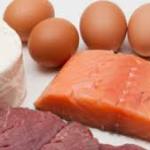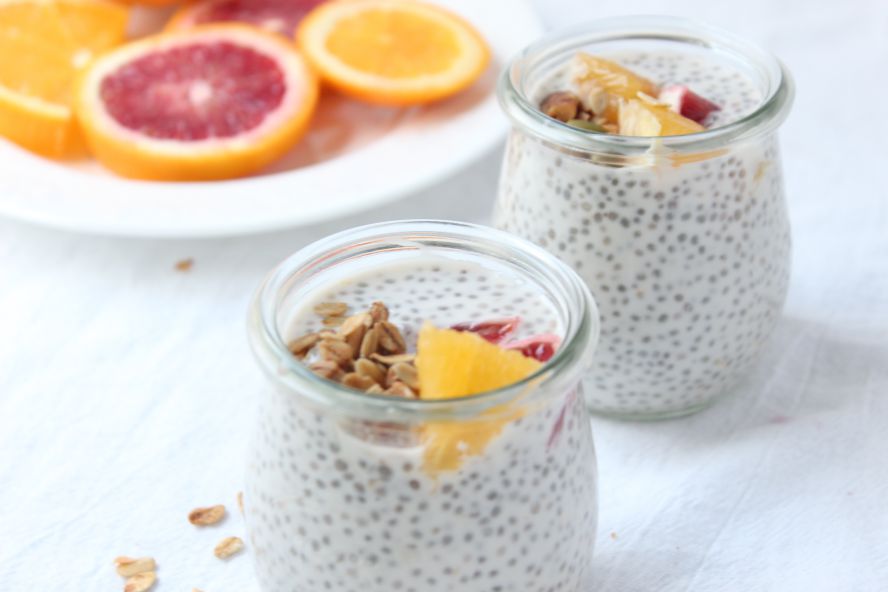Vitamin D, a fat soluble vitamin, helps our body absorb calcium for strong bones and teeth. Vitamin D also helps build our immune system, our muscles function properly, and helps our nerves communicate with our brain. Research also suggests vitamin D may improve our mood.
Recommended Vitamin D intakes:
| Age | Recommended intake/ day | Safe Upper tolerable level/ day |
| 0-6 months | 400 IU/day | 1000IU |
| 6-12 months | 400 IU/day | 1500 IU |
| 1-3 years | 600 IU/day | 2500 IU |
| 4-8 years | 600 IU/ day | 3000 IU |
| 9-70 years | 600 IU | 4000 IU |
| Over 70 | 800 IU | 4000 IU |
| Pregnant and lactating | 600 IU | 4000 IU |
Vitamin D food sources:
There are limited food sources of vitamin D and most people do not eat enough of those sources to meet the recommended daily intake. Fish, liver, and egg yolks are the only natural food sources. Fortified foods such as orange juice, soy milk, rice and almond milk, and margarine are good sources, check the label to make sure they have been fortified with vitamin D.
**Pregnant women should avoid liver due to Vitamin A toxicity.
| Food | Serving size | Vitamin D (IU) |
| Milk | 1 cup | 103 |
| Fortified rice beverage | 1 cup | 88 |
| Fortified soy beverage | 1 cup | 88 |
| Fortified orange juice | 1/2 cup | 53 |
| Fortified margarine | 2 tsp | 51 |
| Egg, yolk | 1 | 25 |
| Herring, cooked | 75 grams | 162 |
| Trout, cooked | 75 grams | 210 |
| Mackerel, cooked | 75 grams | 81 |
| Salmon, Atlantic, cooked | 75 grams | 246 |
| Salmon, chum, canned | 75 grams | 168 |
| Salmon, pink, canned | 75 grams | 435 |
| Salmon, sockeye, canned | 75 grams | 585 |
| Sardines, Pacific, canned | 75 grams | 360 |
| Sardines, Atlantic, canned | 75 grams | 70 |
| Tuna, canned | 75 grams | 44 |
| Tuna, albacore/ahi, cooked | 75 grams | 44 |
| Tuna, skipjack, cooked | 75 grams | 381 |
| Tuna, bluefin, cooked | 75 grams | 690 |
IU= international unit, 1 cup = 250mL, 1/2 cup= 125mL, 1 tsp= 5mL, 75 grams=2.5 ounces
Vitamin D and sunshine:
Vitamin D, also known as ” the sunshine vitamin” because our bodies synthesize it from sun exposure. During the summer months, most of us get some of our vitamin D from being outdoors in the sunshine . However, there are many factors that inhibit and/ or reduce our body’s ability to make vitamin D such as: sunscreen, protective clothing, skin pigmentation, cloud coverage, amount of time spent outdoors, and time of day. Furthermore, because of the latitude of Canada and Northern United States our bodies don’t make any vitamin D, from October through March, even on sunny days.
Vitamin D supplements:
It is difficult to receive adequate amounts of vitamin D, especially in the winter months. If you have concerns about you or any of your family members needing a supplement, talk to your health care professional about the recommended daily amount.
Because breast milk is naturally low in vitamin D,all healthy full term breastfed babies, are recommended to take a daily vitamin D supplement . Health Canada recommends 400 IU/ day but depending on your location, time of year, and ethnic background your baby may need 600 IU/ day, check with your healthcare professional. Vitamin D supplements for babies come in drops or liquid form. Most vitamin D drops for babies have 400 IU per drop or 1 mL of vitamin D liquid, make sure you read the label and instructions carefully before giving to your baby.
I hope you find this post helpful for you and your family. Cheers to strong bones and teeth. If your feeling blue during the long winter months, make sure your meeting your vitamin D requirements, get plenty of sleep and don’t forget to exercise.
Sources:









